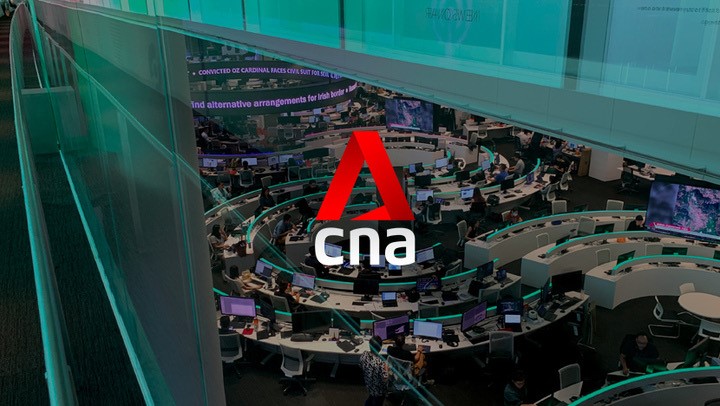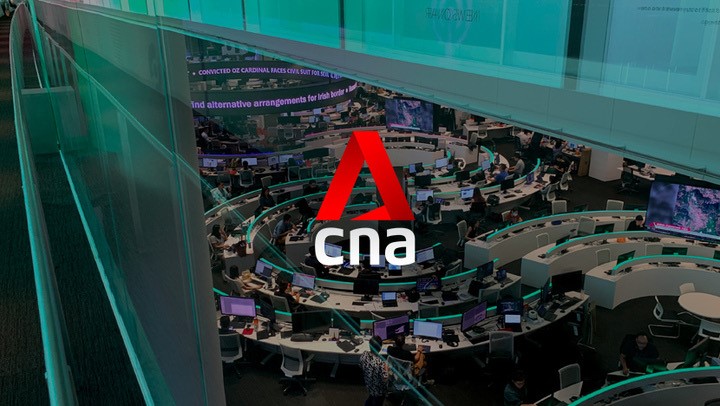Skip Navigation
Main navigation and Meta Navigation
To Home
Meta Main Navigation
- OpenAll SectionsAll SectionsClose
Singapore Edition International Edition
NDR 2018: ‘Ambitious’ housing, healthcare plans are ‘fundamental commitments’ to Singaporeans, says PM Lee
Singapore
NDR 2018: ‘Ambitious’ housing, healthcare plans are ‘fundamental commitments’ to Singaporeans, says PM Lee
The Prime Minister outlined plans to extend the CHAS scheme to all Singaporeans regardless of income, set up a Merdeka Generation Package and upgrade HDB flats twice in their 99-year lifespan in his National Day Rally speech.
image: data:image/gif;base64,R0lGODlhAQABAAAAACH5BAEKAAEALAAAAAABAAEAAAICTAEAOw==
Prime Minister Lee Hsien Loong waving at the 2018 National Day Rally at ITE. (Photo: TODAY/Jason Quah)
By Kevin Kwang
19 Aug 2018 09:38PM(Updated: 19 Aug 2018 10:39PM)
Share this content
Bookmark
SINGAPORE: “Ambitious endeavours” to improve Singapore’s public housing and healthcare were revealed by Prime Minister Lee Hsien Loong in his
National Day Rally speech on Sunday (Aug 19).
These endeavours, Mr Lee said, are “fundamental commitments” by the Government to Singaporeans even as they require large expenditure and many years – “several generations and many General Elections” – to realise.
Advertisement
These come even as
cost of living pressuresare growing, driven by housing, education and health costs.
“Housing, education and healthcare are three areas that the Government is very focused on,” he said. “We will spare no effort to ensure you can afford them.”
Given that education, particularly
pre-school education, figured prominently in his NDR speech last year, Mr Lee chose to focus on healthcare and housing this time round.
EXTENDING CHAS, MORE POLYCLINICS
Advertisement
For healthcare, one of the initiatives the Prime Minister unveiled was the extension of the
Community Health Assist Scheme(CHAS) to all Singaporeans with chronic conditions regardless of their incomes.
CHAS entitles cardholders to subsidies for outpatient treatment at general practitioners (GPs), and it covers middle- and lower-income Singaporeans.
Mr Lee cited the experience of People’s Action Party (PAP) MP Dr Lily Neo, who recounted how the elderly who may have put off seeing the doctor until the very last moment are coming to visit her earlier due to the scheme and allowing her to treat them before their conditions worsen.
“CHAS has worked well,” the Prime Minister said, adding that everyone appreciates a little bit of help with regular medical bills for chronic conditions like diabetes, high blood pressure or high cholesterol.
He said CHAS benefits will continue to be tiered according to income, and the Ministry of Health (MOH) will announce more details later.
He also said the
Government will be building more polyclinics across Singapore.
MOH has been building and upgrading polyclinics and medical centres across the island, such as those in Punggol, Kampung Admiralty and Ang Mo Kio, and there will be such healthcare facilities in Sembawang, Eunos, Kallang and Bukit Panjang by 2020, he said.
Furthermore, Nee Soon Central and Tampines North will also have polyclinics by 2023, he added.
“So we will have more affordable, accessible, high-quality primary care all over Singapore,” Mr Lee said.
HONOURING THE “MERDEKA GENERATION”
Besides specific healthcare initiatives, the Prime Minister was also keen to remember another group of Singaporeans who have contributed significantly to nation-building: Those who were born in the 1950s, or the “Merdeka Generation”, of which there are 500,000 today.
Mr Lee recognised that when the Government introduced the
Pioneer Generation Package in 2014 for those born in 1940 or earlier, Singaporeans who are a little younger would have just missed out. It did give those who were born between 1950 and 1959 annual Medisave top-ups of S$100 or S$200 but “a Medisave top-up is not quite the same thing as the Pioneer Generation Package”, he added.
As most of those in the Merdeka Generation are in their 60s today, and will have either left the workforce or will soon be retiring, Mr Lee said this group will be looking at their Central Provident Fund (CPF) savings and Medisave accounts and worry about having enough for their medical needs as they age.
“I think we owe something to them,” he said.
As such, he announced the Government will work out a Merdeka Generation Package, which will help this group meet their medical expenses. It will cover similar areas as the Pioneer Generation Package such as outpatient subsidies, Medisave top-ups, MediShield Life premium subsidies and payouts for long-term care.
He added that the Government will set aside a “significant sum” for the package, with more details to be announced next year.
“The benefits will not be as large as for the Pioneer Generation, who had much less advantage in life,” Mr Lee said. “But the Merdeka Generation Package will go some way to relieve their healthcare worries.
“And more importantly, it will show our appreciation for the Merdeka Generation and their contributions.”
IMPROVING EXISTING HOMES
The Prime Minister also noted that
housing is another area that many Singaporeans are concerned about and, unlike healthcare, is not a “simple matter of keeping prices down because house prices affect different people differently”.
He explained
why the Government has decided on the 99-year leases for Housing and Development Board (HDB) flats, and not make them freehold.
“We need to be fair to future generations. HDB sells you the flat for 99 years. You own it, and you can pass it on for one or two more generations,” he said. “After that, the flat comes back to the state, the Government redevelops the land and builds new flats for future generations.
“This is the only way to recycle the land and ensure that all our descendants can buy new Build-to-Order (BTO) flats of their own.”
He went on to reveal plans to extend the
Home Improvement Programme (HIP) for public housing built up to 1997, meaning
another 230,000 flats will benefit from the scheme. The towns that would benefit include Pasir Ris, Yishun, Tampines and Jurong. The original scheme covered flats built up to 1986.
Mr Lee said HIP has been “very popular” as homeowners get maintenance fixes to issues like spalling concrete, ceiling leaks and damaged pipes. Electricity supply will also be upgraded, as more families have air-conditioners, washing machines and, now, personal mobility devices.
The scheme is heavily subsidised, with the Government paying up to 95 per cent of the cost and residents paying as little as a few hundred dollars, he pointed out, adding home prices usually go up after the improvements are made.
The Prime Minister added that after the HIP, flats should be good for another 30 or 40 years, which means they will be about 60 or 70 years old before they show their age again.
“We are determined not to let our public housing degenerate into ragged, squalid slums, which has happened in many other cities,” Mr Lee said, announcing the inception of a second round of upgrading called HIP II. The first flats will reach 60 to 70 years old about 10 years from now, and that's when they will launch the project.
“In short, every HDB flat can expect to be upgraded twice during their lease.”
This second upgrading round is a “huge financial commitment” for the Government, with the first HIP costing more than S$4 billion. The Prime Minister said the second round will probably cost even more than that as the flats will be twice as old by then.
He said HIP II is a “well justified” cost though, and the Government will do it so long as the Ministry of Finance has the money.
CASHING OUT EARLIER
Mr Lee went on to acknowledge the concerns of homeowners who want to move out of their existing flats and get on the Selective En bloc Redevelopment Scheme (SERS).
He said SERS is a very good scheme for estate rejuvenation but it is very limited in that it targets selected HDB blocks or precincts that have high development value yet to be unlocked. HDB estimates that
only around 5 per cent of flats are suitable for SERS, and while there will be a few more such projects to come, many have already been done.
That said, he revealed that more households will be able to benefit from redevelopment before their 99-year leases are up. This will be done through a new
Voluntary Early Redevelopment Scheme (VERS) for when a flat hits age 70 and above.
Residents in the precinct will have to vote for VERS, just like for HIP. If residents vote for it, the Government will buy back the flats and residents can use the proceeds to help pay for another flat, he explained.
If they vote not to go for VERS, residents can continue to live in their flats until their leases run out, he added.
He also stressed that VERS is a long-term plan and not one that will start for another 20 years, when the first precincts start reaching that age threshold.
“We need the time to work out how to choose the precincts, how to pace the redevelopment out, the specific terms of the Government’s offer and so on,” Mr Lee said. “We also need to study how to afford VERS for the long term.
“But I think such a scheme is necessary, and we will start planning for VERS now.”
A “NATION OF BOUNDLESS OPPORTUNITIES”
Mr Lee highlighted how the Government is planting the seeds now in terms of conceiving the plans, investing the resources and building the institutions, even though some of the benefits will only be felt generations later.
“Very few countries can make such long-term plans and anticipate needs and opportunities into the distant future. But in Singapore, we can and we will,” he said.
“This Government believes it owes it to you to look ahead, share our thinking with you, pool our ideas and work it out with you to make it happen.”
He cautioned that the plans will not unfold exactly as predicted as nobody can tell what will happen over the next half century – whether there will be war or peace, technological disruptions or if countries big and small can work together.
However, he said the Government knows what Singapore must strive for to give itself the best chances of success: A thriving economy and sound Government finances, political stability and outstanding leadership, and staying a united people and working together to build a better Singapore.
“With what we now have, we can achieve so much more together,” Mr Lee said.
“One hundred years from now, Singapore should stand out not just for its modern skyscrapers and world rankings, but for being a nation of boundless opportunities.”
Source: CNA/kk
Tagged Topics
Share this content
Bookmark
More stories for you
Get the Channel NewsAsia newsletter in your inbox
SUBSCRIBE
Advertisement
More information about Channel News Asia
jump to top of page
Sections
About Us
Advertise with us
Get the news that matters in your inbox every morning!
Please enter your email address
I consent to the use of my personal data by Mediacorp and the Mediacorp group of companies (collectively "Mediacorp") to send me marketing and advertising materials in relation to goods and services of Mediacorp and its business partners and for research and analysis
SUBSCRIBE
Follow our news
Experience news with our apps
Copyright© Mediacorp 2018. Mediacorp Pte Ltd. All rights reserved.
image:
https://rp.gwallet.com/r1/cm/p46
image:
Read more at
https://www.channelnewsasia.com/new...ousing-healthcare-plans-in-the-works-10631432


 6 men arrested for rioting along Sims Avenue
6 men arrested for rioting along Sims Avenue Winter Is Ramen Season: Where to Eat Ramen in PerthUber Eats
Winter Is Ramen Season: Where to Eat Ramen in PerthUber Eats





